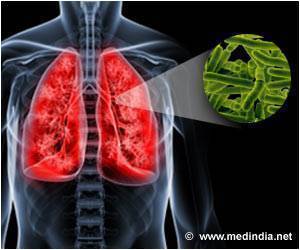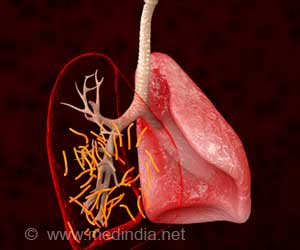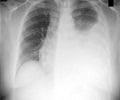Highlights:
- One-month course of rifapentine plus isoniazid was comparable to single agent isoniazid treatment for nine months to prevent tuberculosis infection in HIV patients as per a recent randomized trial
- Preventive therapy, especially in high-risk groups such as HIV infected patients is one of the key strategies to eradicate tuberculosis, but current preventive regimens last for several months and patient compliance is poor
- Tuberculosis remains the leading killer among infections. Despite TB programs achieving reduced death rates and being cost-effective, there has been no noticeable impact on the global incidence of TB
Read More..
Testing Efficacy of Shorter Regimens
Since the standard preventive TB regimen last 6-9 months and associated with poor treatment completion rates, the search has been on for shorter courses without compromising on efficacy. This prompted the current randomized trial testing the efficacy of a one-month course of rifapentine plus isoniazid versus the standard isoniazid for up to nine months.- The randomized trial dubbed Brief Rifapentine–Isoniazid Efficacy for TB [Tuberculosis] Prevention/A5279 trial was conducted in 10 countries in across Africa, Asia, Caribbean, South America, and North America from May 2012 to November 2014. All patients were followed up until November 2017, which was about three years after the last patient had been enlisted
- All participants had confirmed HIV infection, older than 13 years, and either lived in an area with a TB prevalence of at least 60 cases per 100,000 population or tested positive for latent tuberculosis
- Average age of participants was 35 years and 54 percent were females
- About half of the patients were receiving antiretroviral therapy (ART) at onset of the study, and 75 percent of these patients had no detectable viral load.
- Overall, 1,488 participants were randomly assigned to receive a 1-month course of rifapentine plus isoniazid, while 1,498 patients were randomly assigned to receive 9 months therapy of isoniazid alone
- Participants were followed up every 4 weeks for 36 weeks followed by once every 12 weeks thereafter for an average of about 3 years
- Patients were given antiretroviral therapy (ART) with efavirenz or nevirapine for the first month, following which the use of other ART was allowed
Key Findings of Study
- The primary endpoint namely first detection of tuberculosis infection or death due to tuberculosis -- was reported in two percent of patients in the one-month group and two percent of patients in the 9-month control group
- Patients assigned to the 1-month combination treatment reported fewer adverse events, and were more likely to finish the full treatment than the control group
Possible Limitations of Study & Future Plans
- The study enrolled only adults who were not pregnant or breastfeeding and adolescents (≥13 years of age) with HIV infection. Hence, the efficacy of the 1-month regimen in younger children, pregnant women and HIV uninfected persons who are at increased risk needs to be investigated
- The study did not include data from more recent studies that showed an independent benefit of antiretroviral therapy in the prevention of TB. Approximately 50 percent of patients in the current study were on ART at onset of the trial, and more than 90 percent were receiving ART by trial completion
- Although rifapentine-containing regimens are effective in TB, the cost of rifapentine may be an important hurdle to implementation of this regimen in low-income settings where TB is common. Measures must be taken to bring down the cost of the drug
- Prior studies have shown that co-administration of isoniazid and rifapentine with efavirenz did not significantly impact efavirenz concentrations, but further studies are needed to find out about interactions of TB treatment with more contemporary antiretroviral agents, such as integrase strand transfer inhibitors, for example, dolutegravir
Summary
In conclusion, the findings of the study confirmed that one-month of daily rifapentine plus isoniazid was comparable in efficacy to nine months of isoniazid in TB prevention in high-risk patients such as those with HIV infection, which has been predicted in prior mouse model studiesMatthew J. Saunders, MRCP, of University College London in England, and Carlton A. Evans, PhD, of Universidad Peruana Cayetano Heredia in Peru, and an accompanying editorial said: "Improving the brevity, acceptability, and safety of preventive therapy is important and will potentially have a major effect. However, such therapy has to be considered in the context that several billion people ... are believed to have asymptomatic latent tuberculosis infection."
References:
- Ending Tuberculosis through Prevention - (https://www.nejm.org/doi/full/10.1056/NEJMe1901656?query=featured_home)
Source-Medindia
















